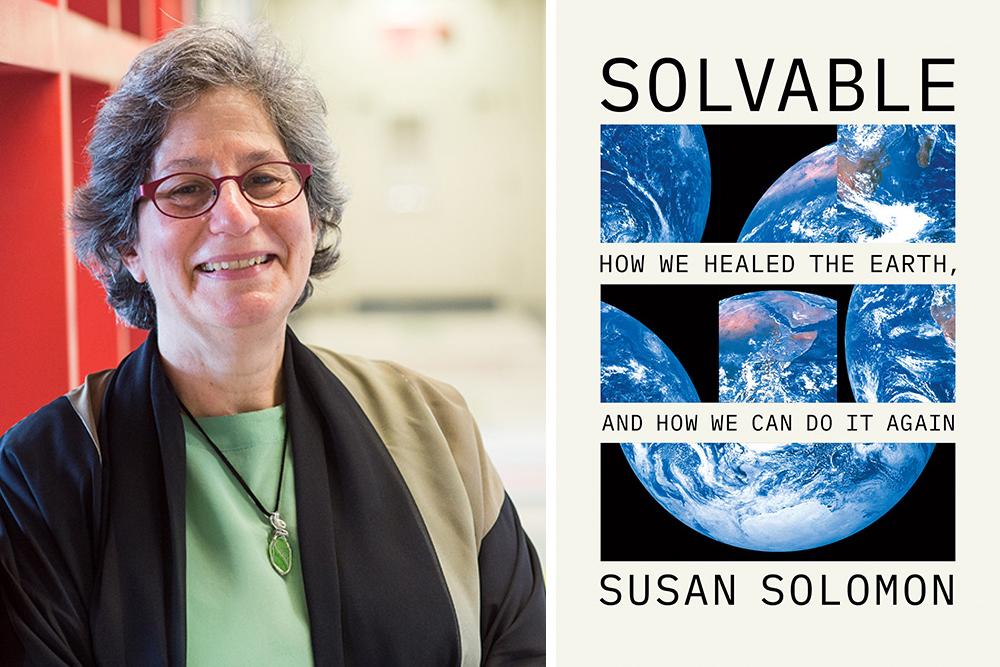Susan Solomon, a professor of environmental sciences at the Massachusetts Institute of Technology, discussed past progress and present solutions to climate change in a lecture held at the University of Rhode Island’s Narragansett Bay Campus on Monday.
Solomon’s talk centered around her recently published book, “Solvable: How We Healed the Earth, and How We Can Do It Again,” which looks at the principles of resolving scientific problems like climate change. Solomon uses a strategy called the “three p’s” – personal, perceptible and practical, to demonstrate the solvability of an issue.
Solomon discussed the unity formed when the public is educated about personally impactful issues like climate change. The first Earth Day on April 22, 1970, was deemed the beginning of the environmental movement, according to Solomon. 20 million demonstrators of all generations came together at universities and public areas on that day to protest climate issues, and college students nationwide called to spread awareness.
“You don’t have to be a scientist to understand that it is getting hotter,” Solomon said.
The talk was part of the Charles and Marie Fish lecture series, named after URI marine science pioneers Charles and Marie Fish, that began in 1990. Established by the Fish family in 1961, the URI Graduate School of Oceanography has held the lecture series as a way to educate the public on ocean health and climate change, according to URI President Marc Parlange.
During her presentation, Solomon recounted the first time she noticed the silent spring. Silent spring is the concept created by Rachel Carson in her novel, “Silent Spring,” published in 1962. The theory documents the environmental harm caused by Dichlorodiphenyltrichloroetha , a pesticide also known as DDT, and how it caused a spring without the sound of birds or bugs, according to Carson.
“I had found a dead robin and I brought it inside,” Solomon said. “They eat earthworms, and with DDT in the soil accumulating for several years, and robins eat them and would die.”
DDT was banned in 1973, according to Solomon. Less persistent pesticides and herbicides replaced DDT as they are short-lived and will not build up in the soil.
In her lecture, Solomon quoted former President Richard Nixon when he said, “make me a player,” in regard to the smog experienced by Los Angeles in the early 1970s. Nixon later signed the Clean Air Act in 1970 which required a 90% reduction in emissions of carbon dioxide, nitrogen oxide and hydrocarbons in new cars, according to Solomon. The act was passed by the United States Senate by a vote of 73-0 on Sept. 21, 1970.
Mario Molina and F. Sherwood Rowland, two atmospheric chemists, discovered the theory that chlorofluorocarbons, also known as CFCs, were being added to the atmosphere and depleting the ozone layer in 1973, according to Solomon. Using the “three p’s” method and applying the practicality perspective, Solomon’s presentation discussed how humans have healed the ozone layer using feasible solutions.
“You wouldn’t have life as we know it without the ozone layer,” Solomon said.
The hole in the ozone layer was first discovered in 1984, according to Solomon. Solomon proposed that the depletion of the ozone layer was personal, as more people were being exposed to higher levels of ultraviolet light and developing skin cancer.
Temperatures were also rising in 1985, which labeled the ozone layer hole as a “hot crisis,” making climate change a more pertinent issue to humanity, according to Solomon.
“Many issues have been managed but not solved,” Solomon said.
In 1987, the Montreal Protocol was established as an internationally binding agreement to eliminate certain greenhouse gasses, specifically CFCs, according to Solomon. Refrigerators are household products that emit CFCs. T he protocol caused the switch from CFCs to hydrofluorocarbon, a greenhouse gas made of hydrogen rather than chlorine.
“We really are saving the ozone layer,” Solomon said.
Solomon concluded the lecture by emphasizing the recent progress made by the U.S. and other countries participating in the Paris Agreement, a policy designed to reduce greenhouse gasses, which President Joe Biden reinstated on Jan. 20, 2021. The climate change policies instituted have decreased the predicted global temperature change for 2100 from four degrees Celsius to three degrees Celsius, according to Solomon.
“I think we are on the cusp of doing what we need to do to succeed with this problem,” Solomon said.
Solomon exemplified the practicality of solving climate change by comparing past solutions and their successful outcomes. By utilizing the concept of community and highlighting that climate change is personal, Solomon said she believes that change is possible.
“[Implementing environmental policies] took a village: science matters, the governments matter, industry and technology matter… but we are foundational,” Solomon said.





